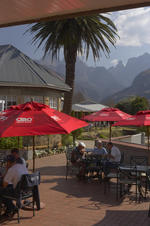Hunters and Woodcutters

Up to 1910 the Mlambonja, Didima and eMhlawazini valleys and all the valleys lying between Cathedral and Cathkin Peaks were little known to white settlers. At that time a government geological survey reported that the area was 'practically unknown and inaccessible'. Reg Pearse claimed that the oldest black people living in the area told him white people first came here in 1910.
They would have been hunters and woodcutters. By 1918 eight farms had been established, but they were used only for summer grazing by farmers from elsewhere. Some of these names still survive on maps as bits of nostalgia - Solar Cliffs, Brotherton, Gewaagd, Tryme, Inhoek, Schaapkraal, Hopeton and Leafmore.
Early in the 20th century the Van der Riet family farmed near the top of Oliviershoek Pass. In 1937 the father Philip bought Inhoek and Schaapkraal farms from Ryk Isaak Buys of the Free State. The Van der Riets lived close to the German Zunckel family on top of Oliviershoek Pass, and the fact that they became the two great families of Drakensberg inn-keepers must be more than sheer coincidence.
Philip Van der Riet's idea for the farms was to build a hotel, but it seems all he did was take his son Albert there on 'camping, fishing and hunting trips'. In 1934 Albert Van der Riet, one of South Africa's greatest fresh and salt-water fishermen, stocked the Mlambonja with brown trout taken from the Mooi River.
In 1938 Albert chose the site on which Cathedral Peak Hotel was built, and what a site it is. Cathedral is a sub-range of the main escarpment and, by choosing a site that looks up into the corner of these overwhelming ridges, Albert endowed the hotel with more panoramic grandeur than any other.